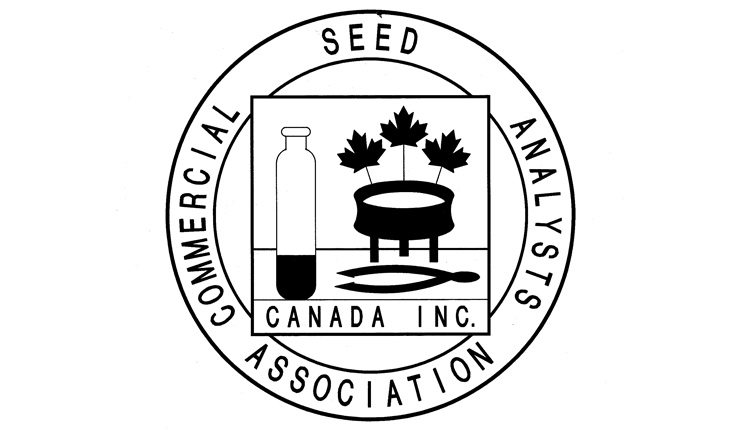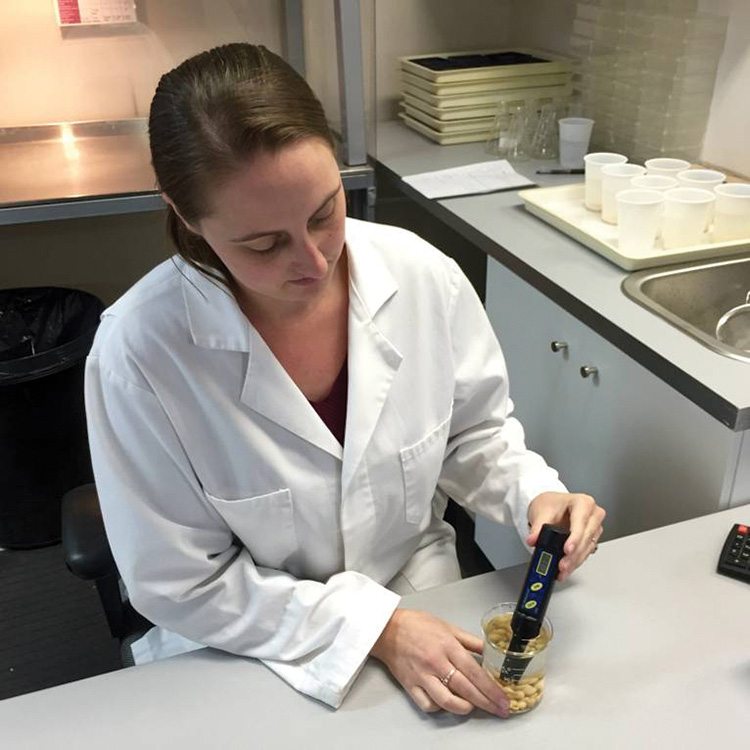The 68th United Nations General Assembly declared 2016 the International Year of Pulses. The idea of using pulses to increase food security, as well as improve crop rotations and soil fertility is not lost on the Canadian seed industry._x000D_
_x000D_
Pulses are an important crop to Canadian farmers. Researchers have made important advances in breeding for characteristics such as reduced pod shattering, seed size, thinner seed coats and reduced dormancy. However, sometimes these same characteristics can create challenges when it comes to seed vigour. These challenges may include: decreased shelf life, mechanical damage during handling, and increased damage from rain and frost prior to harvest._x000D_
_x000D_
A great way to determine if a seed lot has suffered vigour loss is the electrical conductivity (EC) test. According to the Association of Official Seed Analysts (AOSA) Vigour Handbook 2009: “The test measures the leakage of solutes such as amino acids and inorganic ions from cell membranes. Low quality seeds have poor membrane structure that allows the outward diffusion of ions during imbibition that can be detected by monitoring the electrolytes present in the steep water (Simon and Mills, 1983). As a result, high levels of leakage are characteristic of low vigour seed lots, even those with acceptable laboratory germination levels. Low or poor field emergences expected from these lots, particularly after exposure to less favourable or stressful conditions. Seed lots with low electrolyte leakage during imbibition are considered of high vigour.”_x000D_
_x000D_
_x000D_
The test was used in seed testing as early as 1925. Extensive studies have been done on the test including research by Stan Matthews and Allison Powell, who chairs the International Seed Testing Association Vigour Committee. They related the test significantly to field emergence. The test has proven its ability to predict when seed lots with germinations over 80 per cent will have poor field performance in cold wet soils._x000D_
_x000D_
Within the seed testing sector of the industry, this test has proven to be repeatable amongst laboratories all over the world. The test is published in the ISTA rules for use in some of the following crop kinds: Cicer arietinum (chickpea), Phaseolus vulgaris (field bean), Glycine max (soybean), and Pisum sativum (garden pea). The test is used unofficially in many other crop kinds._x000D_
_x000D_
Put simply; four replicates of 50 seeds are weighed and then placed in a measured amount of deionized water. The seeds are soaked for 24 hours at 20 degrees Celsius. The leachate of the water is measured by an electrical conductivity meter._x000D_
_x000D_
As with all vigour tests, great care must be taken to measure the precision of all steps and supplies in the laboratory. The result is given a measurement in uScm-1g-1, then a rating is applied. The lower the EC number, the better. It signifies less leaching of solutes and a higher vigour._x000D_
_x000D_
If you are concerned about the vigour of your pulse seed, contact a CSAAC member for advice. For contact information, visit www.seedanalysts.ca. Morgan Webb, CSAAC Vigour Committee Chair.













